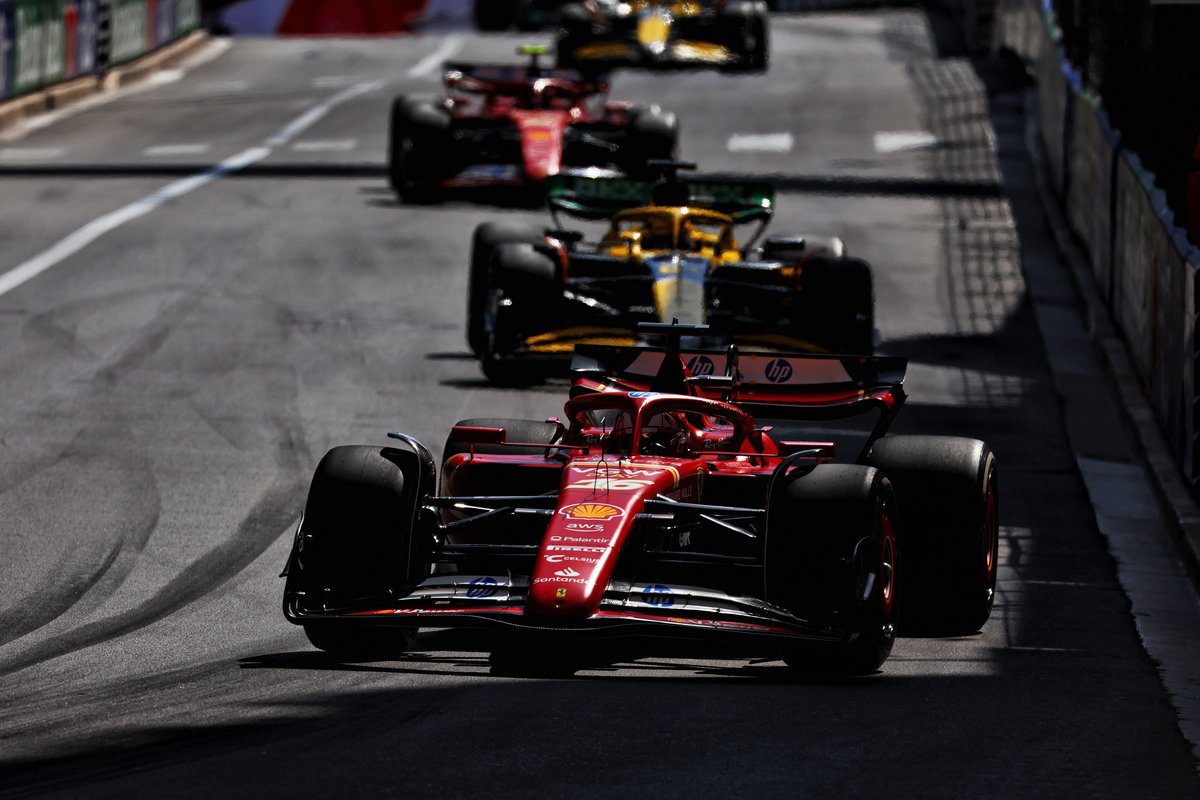

The Monaco Grand Prix has, for many decades, been an event that centres around qualifying on Saturday afternoon.
Overtaking is near impossible, and as a result, grid position is more critical there than anywhere else.
Save the odd weather-affected race, Monaco is a procession and deserves to have its place on the calendar questioned – though that’s a whole different topic.
The one hope of something other than that on Sunday was the prospect of race strategy, especially with two Ferraris and two McLarens at the front.
In normal circumstances, teams could have used strategy to attempt to force a way through, with gaps in the pack opening up for the leaders to drop into as they dived into the lane.
However, there was no need for anyone to pit because under the current red flag rules, teams can change tyres, and have it count as a compulsory stop.
That simple fact created an especially dull Monaco Grand Prix without even the intrigue pit stops might have afforded (remember how important they were in 2016…?).
Under red flag rules, teams can not only change tyres but also affect repairs. Oscar Piastri was given a new sidepod cover, and mechanics attempted to repair his damaged floor as best they could following contact from Carlos Sainz.
It also meant Sainz could have his punctured tyre replaced and regain third for the restart, despite having ground to a halt at Casino Square and fallen to last.
There is no question a red flag was essential. A photographer was hurt and three cars littered the circuit with debris. A red flag was the only option and is unquestioned.
Everything that happened in pit lane after the stoppage, however, should be questioned. More than that, it should be addressed as a priority because the watching world was robbed of a motor race.
Even the drivers were critical of the regulations as they stand, some with greater vested interests than others.
“Today we’ll definitely ask questions of ‘okay, can we rewrite the rule?’,” quizzed Daniel Ricciardo.
“Obviously if there’s a red flag 10 laps to go, well then there shouldn’t be a compulsory pit stop, but on Lap 1 when the whole race really restarts?
“It was 100 percent the right decision and I’m glad everyone’s okay, but from what then transpired and what is already a boring race, it really cemented the boredom and we really know that everyone was going to try and go to the end.”
Lando Norris was also critical of the rules, branding them unfair.
He’d started fourth and climbed to third after Sainz pulled off at Casino Square, only to hand that place back to the Spaniard under the red flag when the field was reset.
“I think that ruined any other opportunities that might have come my way with strategy and tyre saving and stuff like that,” he said.
“Carlos got quite lucky there was a red flag because he was out, or last, and that was his own fault.
“For him to get back was obviously annoying because it put me back down to fourth.
“But otherwise, yeah, just nothing you could do because there was no pistops, nothing, it was just driving slowly until the end.
“I don’t think it’s the most fair thing, but I’m sure there’s been moments in the past when maybe I’ve been fortunate from it,” he added.
“When you think of it in just the blunt way, it is frustrating and unfair.”
The ability to make changes under red flags is primarily a safety issue.
A damaged or dangerous car cannot be allowed to continue in the race, so if there’s an opportunity to make running repairs, naturally, that makes sense.
And of course, if there’s an opportunity to improve the car mid-race for free, they’d be daft not to take it.
But in any other context, those repairs would come at a price; you’d lose time and, most probably, track position. Why should it be free just because there’s a red flag?
A simple solution would be that, if you want to complete any work on the car, you get sent to the back of the pack. And tyre changes don’t count as a compulsory stop.
Teams then have a choice: repair the car and take the pain, or leave it as is and hope it can survive (provided it’s safe, repairs to an unsafe car should still be sent to the back)?
It’s a simple solution that would reintroduce a degree of jeopardy in races like Monaco. Sure, some would lose and some would win, but it would be more akin to the jeopardy of a Safety Car with the potential to spice up a race, rather than essentially ending it.
Under that premise, Ferrari would have to have changed Sainz’s tyre in Monaco, dropping him to the back and promoting Norris. But what would McLaren have done? Piastri’s car wasn’t dangerous, but would it have lasted?so would they carry on?
And such a move means the pit stop cycle would have still been ahead of us introducing a degree of natural variation and jeopardy.
Instead, we got Charles Leclerc commanding the race, managing his speed so he couldn’t be strategically challenged.
It was a popular win, and an emotional one too, and nobody would deny him that – but it’s how we got to that point that could so easily be tweaked for the betterment of the spectacle without trivialising the action with gimmicks.





















Discussion about this post